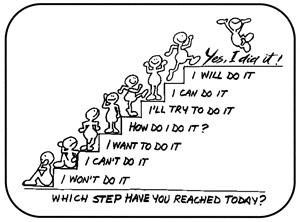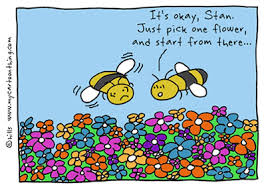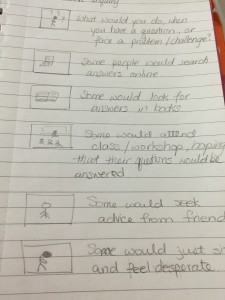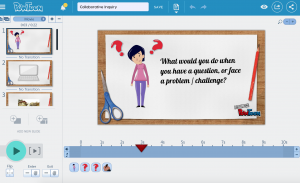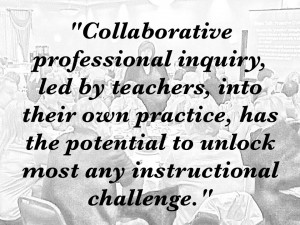Photo courtesy of http://quotepix.com/1622/order/top/tag/Motivational
Finally, it is done! Not only the final vision project is done, but also the course. I have reached to the top of the stairs! My learning through the course had been a roller coaster ride experience. There were times that I was excited about my new discoveries and learnings, however, there were also times that I was overwhelmed and felt incapable of facing the new challenges ahead of me.
As a final reflection of my learning, I read through all the blog posts that I have done for this course. I could see my vision growing from teaching multiliteracies in the classroom, to fostering school-wide reading passion, and moreover, to advocating collaborative inquiry as a tool for professional development. For a passive observant like me, the growth of vision made me feel like a butterfly breaking out of its chrysalis, spreading its wings and ready to fly. I do not think I could fly yet, but my learning in building my personal learning network (PLN), my practice on writing blog posts, and the use of Digg Reader to organize the blogs that I follow equipped myself to become an educational leader in the school community.
At the beginning of this course, I had struggled creating my blog and the postings. I think I spent more time on learning how to create the blog and how to embed links an video than writing the first post. But now, I am glad that I did it. I found that blog posts is an effective tool in sharing ideas and gathering feedbacks. If possible, I would like to use blog as a tool to encourage ideas sharing among staffs at school. Would blog be the best tool? I am not sure, but I would survey my colleagues, or maybe do a collaborative inquiry session on this matter?
My Final Vision Project
During the process of creating the video, I had the general public, including elementary aged students, in mind as my audiences. Therefore, I made my points as simple as it could be. Powtoon is very user-friendly, and the “how-to” videos on the website tutorial page are very helpful. I do not encounter any technical challenge during the process of creating the video.
At last, here is my final vision project.
Link: https://www.powtoon.com/online-presentation/bkc0Mo1nnBc/collaborative-inquiry/

